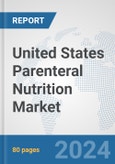Segments Covered
The report on parenteral nutrition market provides a detailed analysis of segments in the market based on Nutrient Type, Dosage Form, End User, Patient Type, Disease Type, and Distribution Channel.Segmentation Based on Nutrient Type
- Carbohydrates
- Amino Acids
- Lipids
- Electrolytes
- Others (Multivitamin Formulations and Trace Elements)
Segmentation Based on Dosage Form
- Bags
- Vials
- Ampules
- Bottles
Segmentation Based on End User
- Clinics
- Hospitals
- Others
Segmentation Based on Patient Type
- Pediatrics
- Adults
Segmentation Based on Disease Type
- Alzheimer’s
- Cancer Care
- Diabetes
- Chronic Kidney Diseases
- Others
Segmentation Based on Distribution Channel
- Retail Stores
- Pharmacies & Drug Stores
- Online Channels
- Others
Highlights of the Report
The report provides detailed insights into:
1) Demand and supply conditions of the parenteral nutrition market2) Factor affecting the parenteral nutrition market in the short run and the long run
3) The dynamics including drivers, restraints, opportunities, political, socioeconomic factors, and technological factors
4) Key trends and future prospects
5) Leading companies operating in the parenteral nutrition market and their competitive position in United States
6) The dealers/distributors profiles provide basic information of top 10 dealers & distributors operating in (United States) the parenteral nutrition market
7) Matrix: to position the product types
8) Market estimates up to 2030
The report answers questions such as:
1) What is the market size of the parenteral nutrition market in United States?2) What are the factors that affect the growth in the parenteral nutrition market over the forecast period?
3) What is the competitive position in United States parenteral nutrition market?
4) What are the opportunities in United States parenteral nutrition market?
5) What are the modes of entering United States parenteral nutrition market?








